I'm using a TinyDuino with a Protoboard to measure temperature with a DS18B20. I was following this tutorial but am not getting any valuable information back on the arduino when I try to read the value on the data port.
I just started reading around and it looks like most people put a resistor between VCC and Data. I'm fairly new to electronics, so 1) I don't know why the tutorial doesn't mention this and 2) I'm not sure what putting a resistor between those two would do?
Any help or explanation appreciated.
Edit
Here's a schematic from a site which uses a resistor. The only difference is my board has VCC, one site said to connect VDD on the sensor to VCC, this one shows it connecting VDD to 5V. I'm not sure the difference
